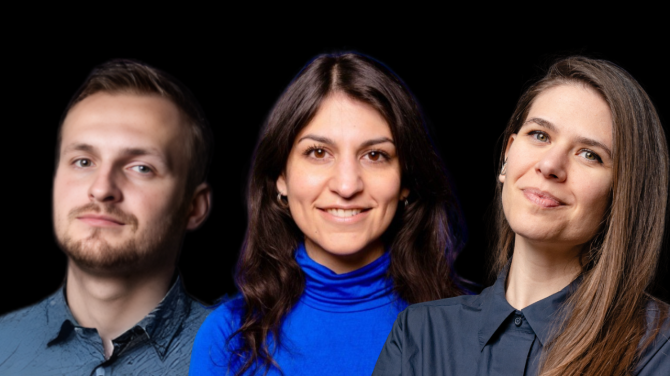As I write this, I am flying over Europe and experiencing some above-moderate turbulences. However, it is nothing compared to the turbulence on the ground.
On the 3rd anniversary of the Ukrainian war, Europe is facing significant new security risks. The new Trump administration wants to disinvest from providing Europe with security and considers Europe’s values misaligned with the US’ newfound values.
Is NATO de facto dead? How fast will this disengagement happen? Will Trump and Putin reach an agreement for splitting influence and territory in Europe?
However ridiculous these questions may sound, nothing is truly certain anymore. One thing is sure, though – Europe needs a modernised, expanded defense force and a revamped defence industry to build it. And it needs them fast.
In theory, Europe has many robust advantages – a significant, albeit older, manufacturing base, technical and entrepreneurial talent, 10x Russia’s GDP, 3x Russia’s population, and much more capital.
The first steps have already been made. For example, NIF (NATO Innovation Fund), a $1bn venture fund investing in dual tech startups and funds, was launched last year. The fund has no US contribution, and therefore, the recent geopolitical shifts do not have any impact on its development.
The defense tech industry investments are also accelerating overall, reaching $5.2bn raised in 2024, a 5x increase in the last 6 years and a 2.5x increase in the last 2 years, as per NIF x Dealroom’s Defence, Security and Resilience in Europe Report. Equally important, almost $4bn of the capital was invested at the growth stage, validating the early stage investments and allowing these companies to scale further.
The defense tech market should grow significantly as well. While the NATO countries in Europe have traditionally invested below the 2% GDP threshold, a renewed commitment should reach 3%, maybe even 4%, of the GDP. Given the EU’s $20tn GDP, every 1% increase means an additional $200bn annual spending on defense products. Yes, a good portion of this will probably be used for US orders, but given the current geopolitical rift, this will most probably be lighter than in recent decades.
But reinvigorating its manufacturing base and allowing new defense tech startups to emerge will have its challenges – most of them because of Europe’s fragmentation.
Europe’s defense tech acquisition process is different for 29 independent MoDs from each country plus the UK and Ukraine.
Some of them have already bought or ordered high quantities of US weapons in the last years – significant budgets have already been committed to an ally we’re now unsure of.
For strategic reasons, each MoD prioritises manufacturing locally some of their weapons, ammunition, and vehicles. They work with a small number of national entities that have been vetted and can provide many of the technology commoditized products – such as artillery shells or bullets.
When it comes to the more complex equipment or services, MoDs prioritise the established players that have already proven that their technology is reliable on the battlefield. For larger quantities, they can do licensing deals so the last stage of the manufacturing process takes place locally, and they can also develop maintenance expertise.
But sometimes, just sometimes, geopolitical urgency and new technologies allow for the creation of new weapons, and the existing players, some of them already manufacturing and selling a large number of diverse products, just cannot move fast enough.
Such a time is now.
With new AI/ML technology, computer vision, new intelligence sources (ex. satellite data), new propulsion systems, and XR/AR technology, many weapons are to be invented or re-invented, and will be further amplified by the latest developments in adjacent areas such as manufacturing and robotics, and the space industry.
The drone is a good example, incorporating satellite intelligence, computer vision technology for autonomous flight and target acquisition, sometimes new propulsion systems, and XR/AR technology for guidance.
In the case of the cheap drones used on the frontline, automated manufacturing is a big plus.
Still, defense is a difficult market, where product quality may be outweighed by strategic considerations, as MoDs need to minimize their supply chain risks.
When starting a defense tech startup, or when investing in one, founders and investors operate in a context where the paths to building a venture-scale company are limited.
We believe that these high-growth opportunities will fall into one of the following scenarios (from horizontal to vertical):
- The next-gen primes — build a larger volume of products, re-imagining all of them with new technology. A prime example of a next-gen prime is Anduril in the US or Helsing in Europe.
The biggest challenge of a prime is that you need to do everything everywhere all at once – you need to (successfully) reimagine multiple lines of products, sell into multiple MoDs, and conversely hire top talent fast, potentially build an industrial base, etc.
That’s why primes are usually started by founders with a great track record, access to capital and people, and who can start by investing their capital. - The Category leader — develops a specialised product or category of products that needs little to no interoperability with the other existing systems. A good example would be ARX Robotics, a developer of UGVs (unmanned ground vehicles) platforms.
Given enough specialisation, a company can develop best-in-category products based on (ideally multiple) IP components that are hard to copy by the primes. Ideally, these products or services would be independent and require little to no connectivity to the existing systems. - The Hyper-specialised — develop one hyper-specialised product or component that can be used in multiple complex products. A good example would be Revobeam, a jamming-safe directional antenna that can be used in electronic environments.
These products should have a large applicability and would still require proprietary IP. Startups would not need to sell them directly to MoDs, but these could be sold to the first two categories, and especially to the primes, who will act as “platforms” for these very specialised products. - The Commoditizer — build products that are commoditized from a technological point of view while radically improving the manufacturing process. A good example would be Frankeburg Technologies, which manufactures cheaper air defense rockets at scale.
Some defense tech products, such as bullets, artillery shells, rockets, and some types of drones, need to be mass-produced. While little to no product IP innovation is required, startups can innovate the machines that manufacture the final product to deliver faster, cheaper, simpler, and more reliable products.
Europe is at a critical junction in its history. By accelerating the development of our defense, industrial, space, and energy industries, we build a better future for our nations, families, and culture.
The time to act is now.







